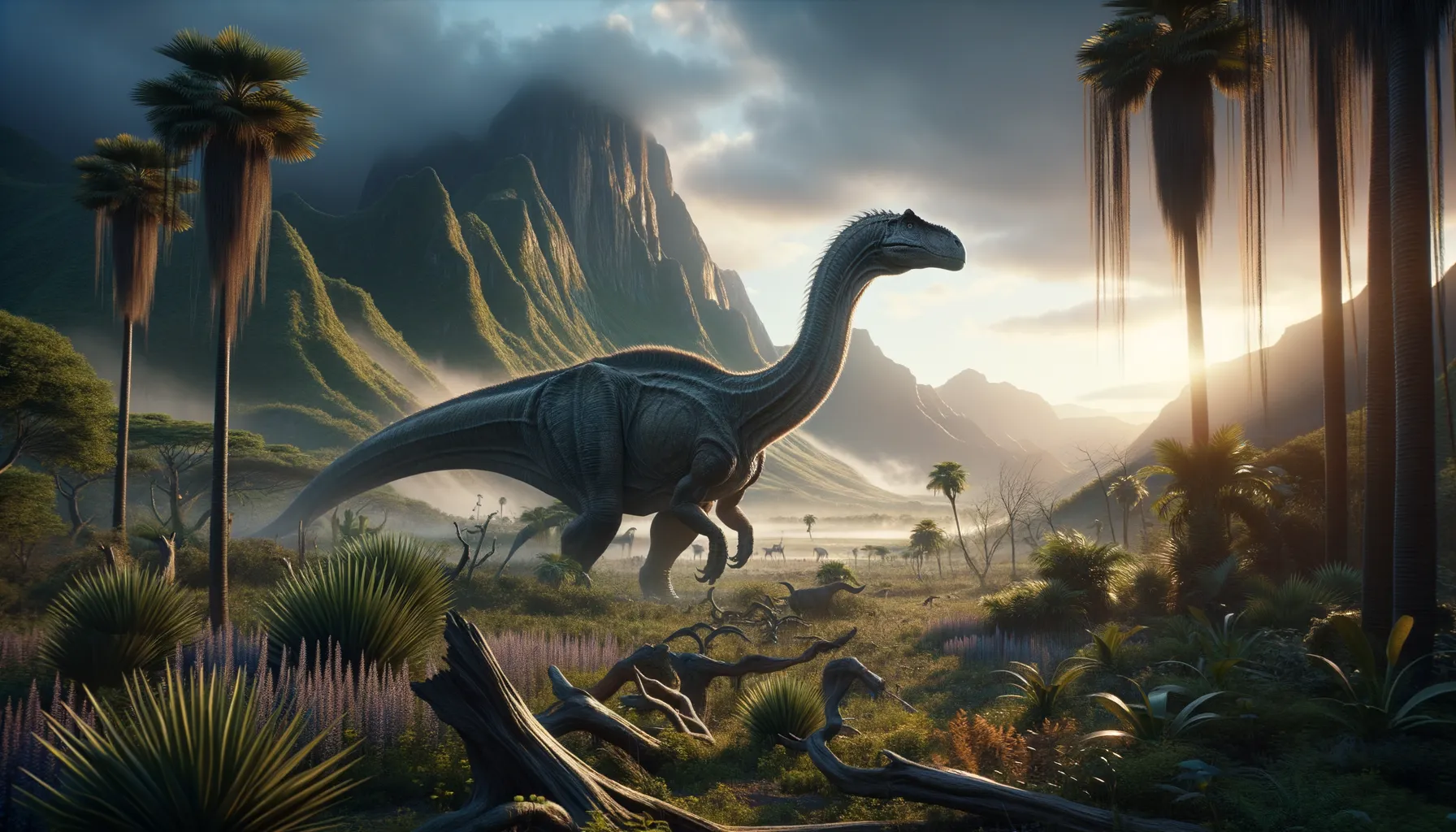
Ultrasauros
Massive marvels from the Jurassic skies.
Period
Jurassic
Length
Its length was estimated to be approximately 25 meters.
Height
Could reach impressive heights of around 16 meters.
Weight
Estimated to weigh up to 55 tons.
Ultrasauros was one of the largest dinosaurs ever known, with immense body size and long neck. Thought to have roamed the Earth during the Jurassic Period, it was primarily a herbivore, feeding on high vegetation that other dinosaurs couldn't reach. Its fossils provide researchers with insights into the life of these gentle giants. The origins and classification of Ultrasauros have been subjects of debate, highlighting the ever-evolving nature of paleontology.
Diet
Ultrasauros was a herbivore, reliant on a diet of plant material. Its long neck allowed it to reach vegetation high in trees.
Hunting
Being a herbivore, Ultrasauros did not hunt. It likely spent its time browsing through canopies for leaves and other plant matter.
Environmental challenges
Ultrasauros faced challenges like finding enough food to sustain its large body. Predation pressure, especially on juveniles, was a constant threat. The changing climate may have also influenced the distribution and availability of its preferred plant species. Navigating through dense forests could be difficult due to its massive size.
Speed
Ultrasauros was likely very slow-moving, given its massive size.
Lifespan
It may have lived for about 70 to 100 years.
First discovery
Ultrasauros was first discovered in the late 20th century.
Fun Facts
- Ultrasauros was initially thought to be the largest dinosaur ever discovered.
- It was believed to have reached lengths of up to 100 feet, equivalent to the length of three school buses!
- Ultrasauros' name means 'Super Lizard', which reflects its gigantic size.
- Later discoveries revealed that what was thought to be Ultrasauros was actually a mix of bones from other dinosaurs like Brachiosaurus and Supersaurus.
- Despite misconceptions, Ultrasauros captured people's imagination and helped to spark interest in paleontology.
- Ultrasauros fossils were found in North America, which was home to many gigantic dinosaurs during the Jurassic period.
Growth and Development
Ultrasauros likely hatched from eggs, growing rapidly in the first few years to avoid predators. Its gigantic size was achieved after many years, providing it with a degree of protection from carnivorous threats. The growth patterns from juvenile to adult sizes would have required a consistent and abundant food supply.
Habitat
Ultrasauros inhabited forested areas abundant with tall trees. These environments provided both food sources and a degree of shelter. Their need for vast areas of land meant they were probably found in regions with sprawling vegetation.
Interaction with other species
Ultrasauros may have coexisted with smaller herbivores and faced threats from large carnivores. Its sheer size might have deterred many predators, but it still needed to be cautious of packs. Their coexistence with other large herbivores could have led to competition over resources.
Natural lifespan
Ultrasauros could naturally live up to a century.
Reproduction
Ultrasauros likely laid eggs as part of its reproductive strategy. Nesting grounds would have been selected with care to ensure protection from environmental threats and predation. Parental care details remain speculative, but the life of the young would have been perilous until they achieved significant size.
Social behaviour
Ultrasauros may have traveled in groups for added protection against predators. Herding behavior could help in finding abundant food sources across large areas. The dynamics within these groups and their interaction with other species remain subjects of ongoing research.
Fossil locations
Fossils attributed to Ultrasauros have primarily been found in the United States, specifically in Colorado. These discoveries have sparked discussions about the accuracy of its classification and whether it may be a junior synonym of other large sauropods. Continued fossil discoveries are adding valuable insights to its history and classification.
